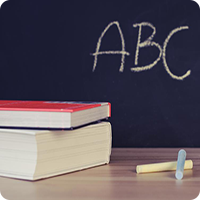As part of our ongoing series on the use of SMS by schools (previous post here), today we look at how teachers can use bulk SMS to keep both parents and students in the loop.
One of the greatest problems teachers are faced with is how to keep in touch with parents of pupils, and similarly pupils themselves once they have left the classroom. In the past teachers would heavily rely on newsletters to pass information on to parents, either in a physical letter or electronically via email. However, such methods are flawed in a number of ways, as the physical newsletters depend entirely upon the student delivering it to their parent, unfortunately often resulting in them being lost along the way. Similarly, email newsletters firstly require parents to have Internet access, which in socioeconomic disadvantaged schools may not always be the case. Secondly, Internet newsletters require parents to regularly check their email, which many today find tedious due to the thousands of emails we receive a month. As result of these issues a new communication platform has arisen in the education system – text message reminders.
Why use SMS?
The vast majority of parents and, older students, are in possession of a mobile phone which as standard will be equipped to receive and deliver text messages. In order to maintain communication between all parties, sending bulk SMS messages to parents, pupils and other teachers will ensure the information is delivered directly to their mobile phones. For example, parents of primary school pupils could receive an appointment reminder SMS message, ensuring they don’t forget to attend a parents’ evening or parent/teacher meeting. Delivering such texts is a far more reliable method of communication than sending a letter home with the pupils, who for a number of reasons may not successfully deliver the information to their parents.
SMS reminders also offer an excellent way to remind parents of any outstanding fees that may need to be paid, thus guaranteeing the message is delivered to the intended recipient as quickly and effectively as possible. Schools could include a weblink that leads the parents directly to a payment method within the message, therefore encouraging them to pay immediately upon receiving the text.
Its not just for parents
Text message reminders also hold a number of benefits for the pupils themselves, not just their parents. Upon reaching high school the workload for pupils can increase significantly, often making it hard to keep on top of what deadlines are due when. A simple SMS reminder from teachers of an upcoming deadline can help students prioritise when to complete a particular piece of homework and also ensure they remember to take it in to school the next day. SMS messaging is a particularly effective method of communication for high school pupils as very few of them regularly check their emails, however teenagers send an average of 2000 text messages per month, therefore reaching them on their mobile phones is much more reliable.
Similarly, high schools could implement SMS reminders to prompt students to pay any outstanding library fees in their name and also return any books that are overdue, or perhaps even remind them to bring the books back in the days prior to their return date. Students would benefit massively from this, as it would save them money and also encourage others to return books on time; making them available for anyone else who may require them.
How NexSMS can help
While it may be possible to contact individual students or parents using standard texting services, texts to mass audiences could quickly become a drain on time and resources. Using a dedicated bulk SMS service, such as NexSMS, can cut the effort involved in sending a lot of texts in a short period of time. With an easy to use interface, advanced delivery reports and starting from 2.8p per message it’s a simple but elegant solution.


